PenInHand: July, 2017
Popura Japanese eyedropper fountain pen, early to mid c1930s
by Jim Mamoulides, July 31, 2017
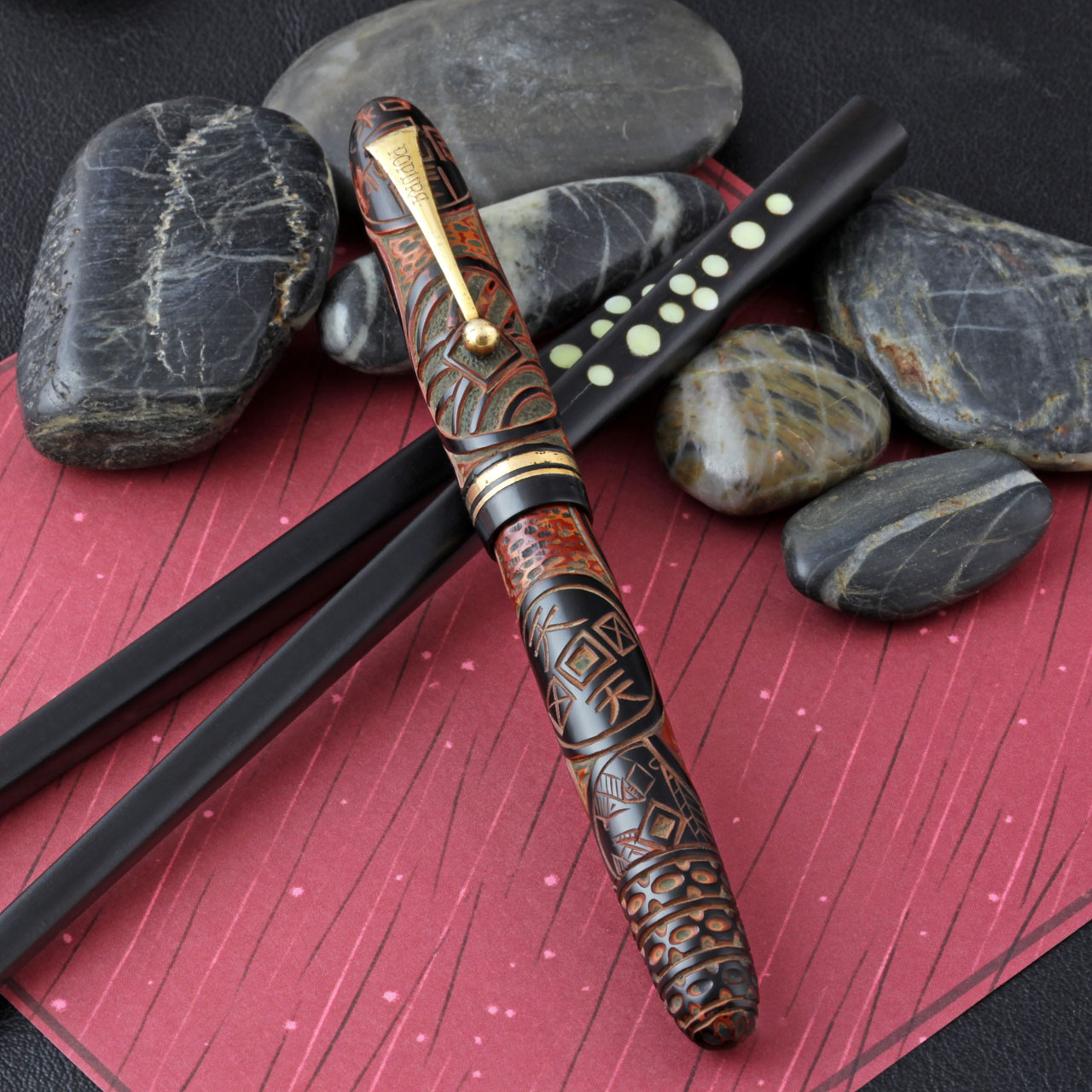 Popura Japanese eyedropper fountain pen, early to mid c1930s
Popura Japanese eyedropper fountain pen, early to mid c1930s
Popura Shugyo K.K., was a small pen company in Tokyo, Japan that operated probably from the 1930s to the 1950s, based on available pen examples. This Popura eyedropper fountain pen dates from the early to mid c1930s given the design and that it has a 14 karat gold nib, since gold nibs were stopped being used on pens in Japan during World War II. Unlike many pens from small Japanese manufacturers, this one has a gold plated clip stamped with the company’s name. It also has a Popura, Tokyo, Nippon stamped Number 3 size 14 karat gold nib.
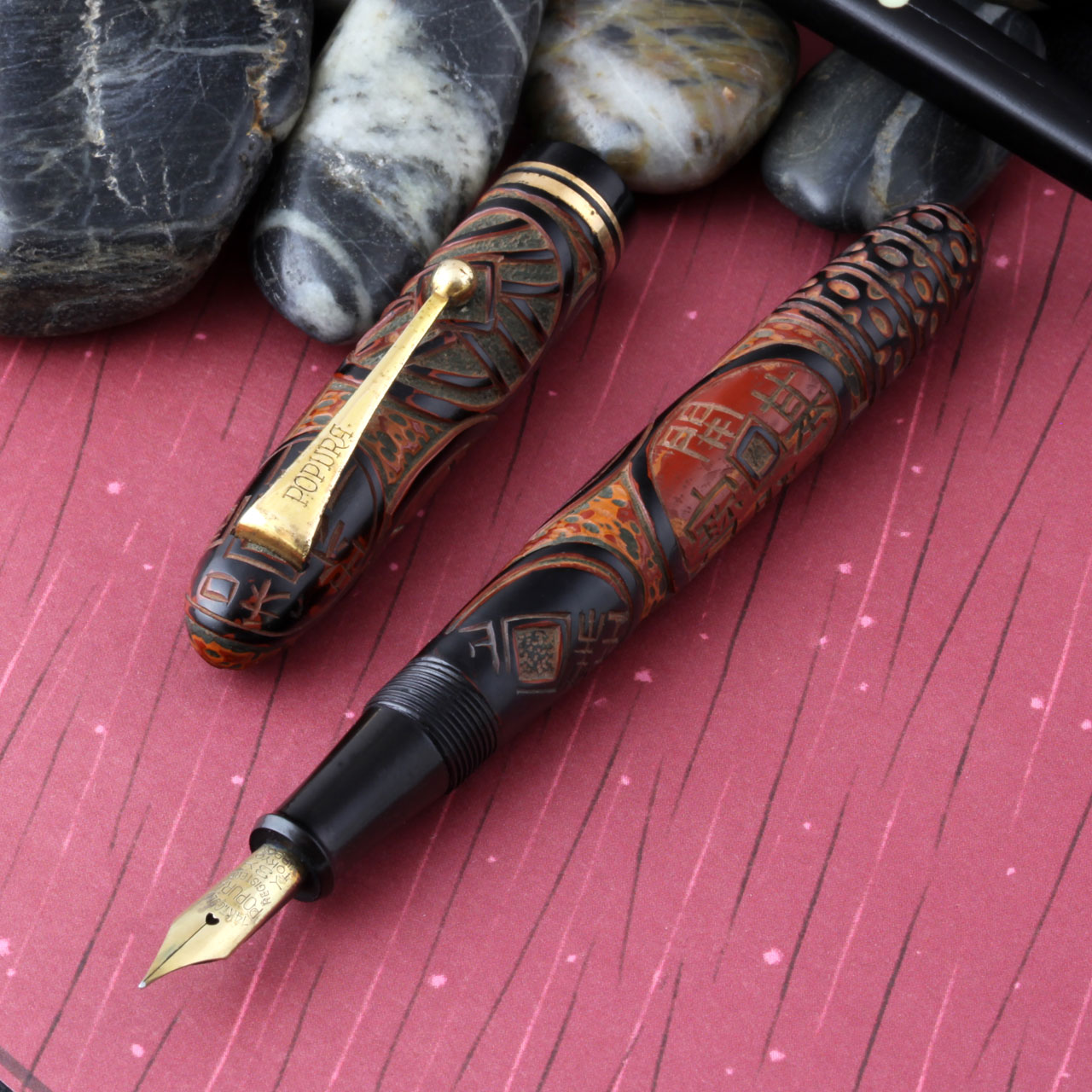 Popura Japanese eyedropper fountain pen, early to mid c1930s
Popura Japanese eyedropper fountain pen, early to mid c1930s
The cap and barrel carving represents Heian era coins. The Heian period was from 794 to 1185 and named after the ancient capital of Kyoto. Buddhism, Taoism and other Chinese influences flourished in Japan during this time. The first coins produced in Japan were made in the Wadô, literally “copper,” era (708-715), named after the discovery of copper in the Musashi. These coins had square holes so they could be bundled using a cord through a group of coins, knotted at each end. Coins may only have been used by the upper classes as peasants traded by bartering goods or services.
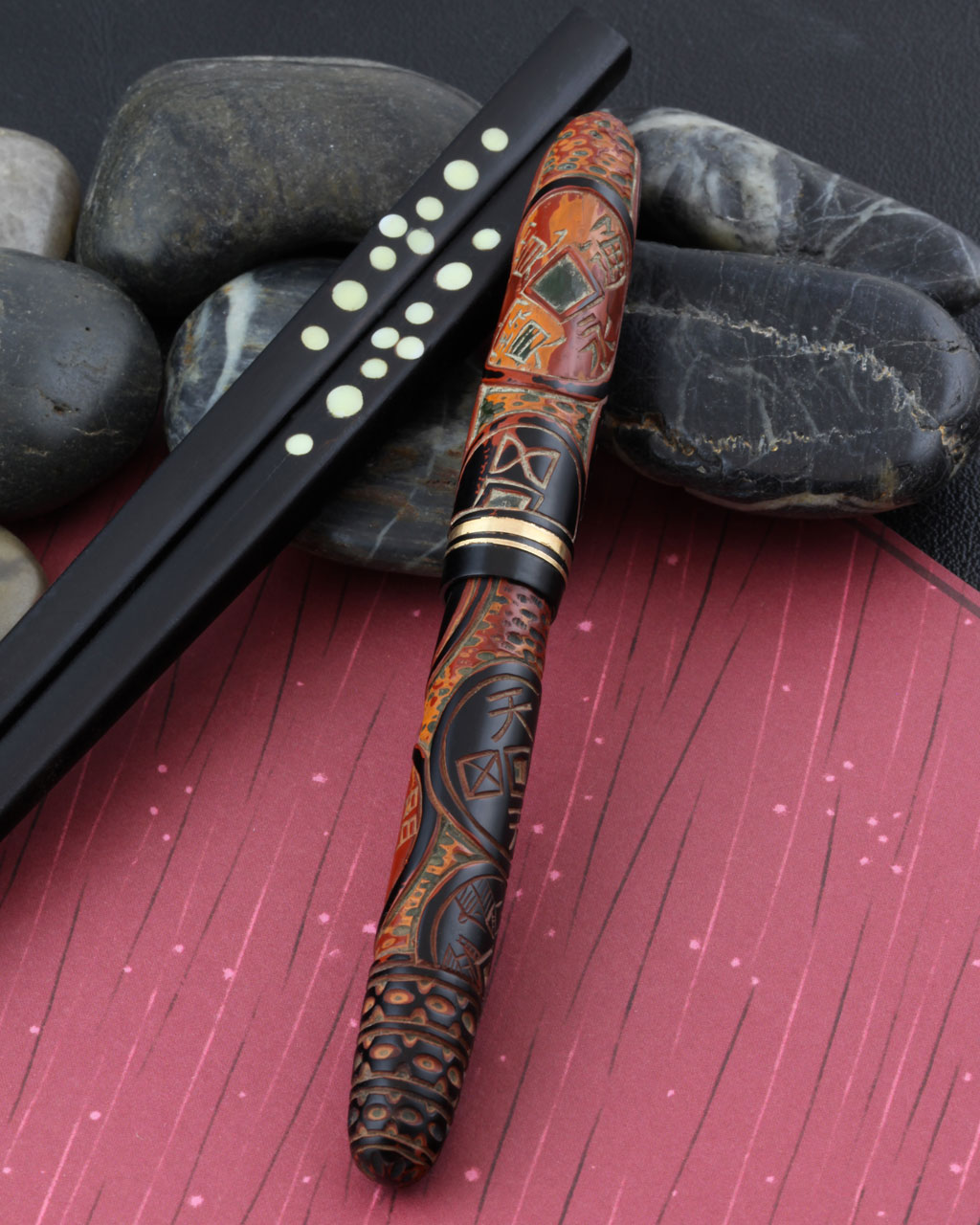 Popura Japanese eyedropper fountain pen, early to mid c1930s
Popura Japanese eyedropper fountain pen, early to mid c1930s
Identification guide and features:
These are eyedropper pens with a shut-off valve at the end of the barrel. They fill by unscrewing the nib section and dripping ink into the barrel using a long eyedropper. The knob at the end of the barrel is attached to a long rod that extends inside the barrel up to the base of the feed in the nib section. When the knob is screwed flush with the end of the barrel, the rod cuts off ink flow to the feed, making it an ink shut off valve. The knob must be unscrewed slightly to allow ink to flow to the nib so the user can write.
The artwork was done using the kamakura bori technique. Kamakura-bori is a decorative technique done by carving patterns in wood or lacquer revealing layers of color and then polishing to finish. Urushi is applied in layers over an ebonite cap and barrel and the design is then cut into the finished pen.
- Ebonite cap and barrel coated in multiple layers of urushi lacquer that is then carved
- Gold plated trim
- Cap unscrews
- Popura, Tokyo, Nippon stamped Number 3 size 14 karat gold nib
- Unknown number of nib grades
- About 5 1/4 inches long with the cap on
- Eyedropper filler with safety shut off
Performance
This is a well made standard size fountain pen with deeply cut kamakura bori artwork. The design flows around the cap and barrel as if it was a collection of coins, with many overlaying others as if left on a table. The artwork reveals multiple colors of urushi lacquer that enhance the design. The design does not extend to the nib section.
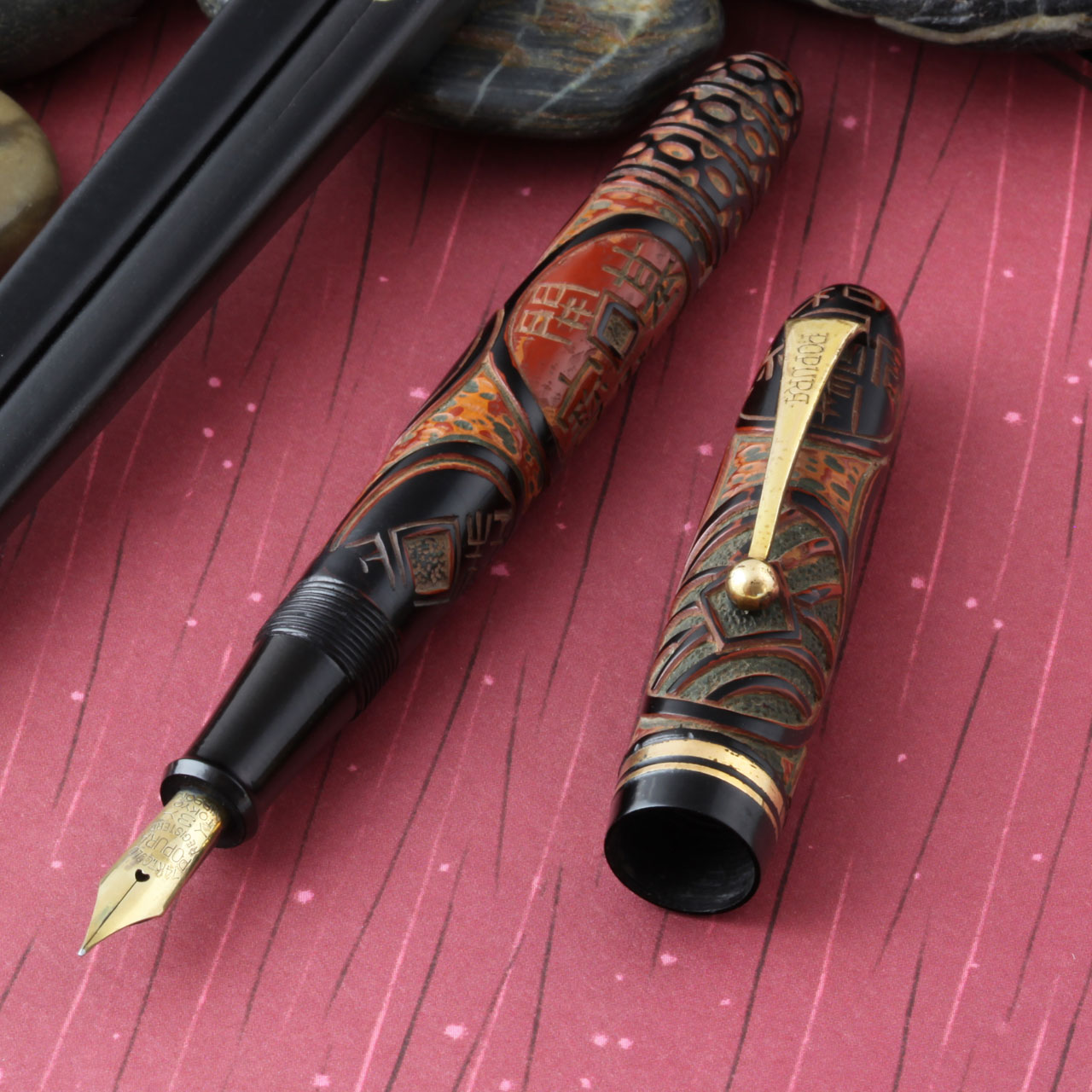 Popura Japanese eyedropper fountain pen, early to mid c1930s
Popura Japanese eyedropper fountain pen, early to mid c1930s
The clip and cap band probably were handsome when new, but show signs of age and wear, with quite a bit of gold plate loss. The Number 3 14 karat gold nib is firm and well-proportioned to the pen. It was not tested.
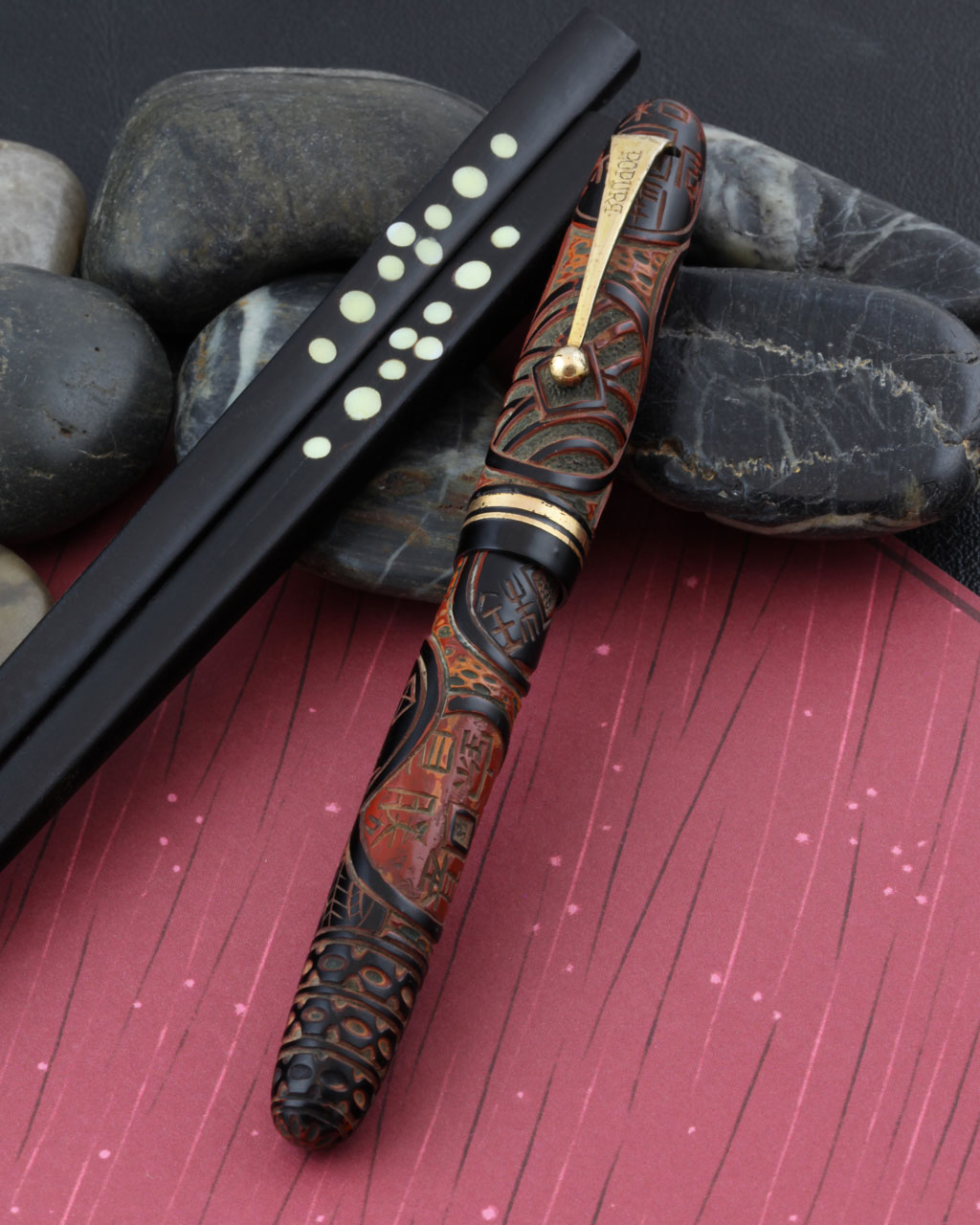 Popura Japanese eyedropper fountain pen, early to mid c1930s
Popura Japanese eyedropper fountain pen, early to mid c1930s
Pens like these are literally works of art meant to used. Maki-e has become the favored artwork for pens from Japan and there are very few modern kamakura bori pens being made.
References
Filling Systems: Overview of How They Work and How to Fill Them, by Richard Binder, © 2016 RichardsPens.com
Fountain Pens of Japan by Andreas Lambrou and Masamichi Sunami, © 2012 Andreas Lambrou Publishers, Epping, Essex, United Kingdom
"Pen Manufacturers - Current and Past," list maintained by Stan Klemanowicz, Fountain Pen Network
Interact
Comments on this article may be sent to the author, Jim Mamoulides


